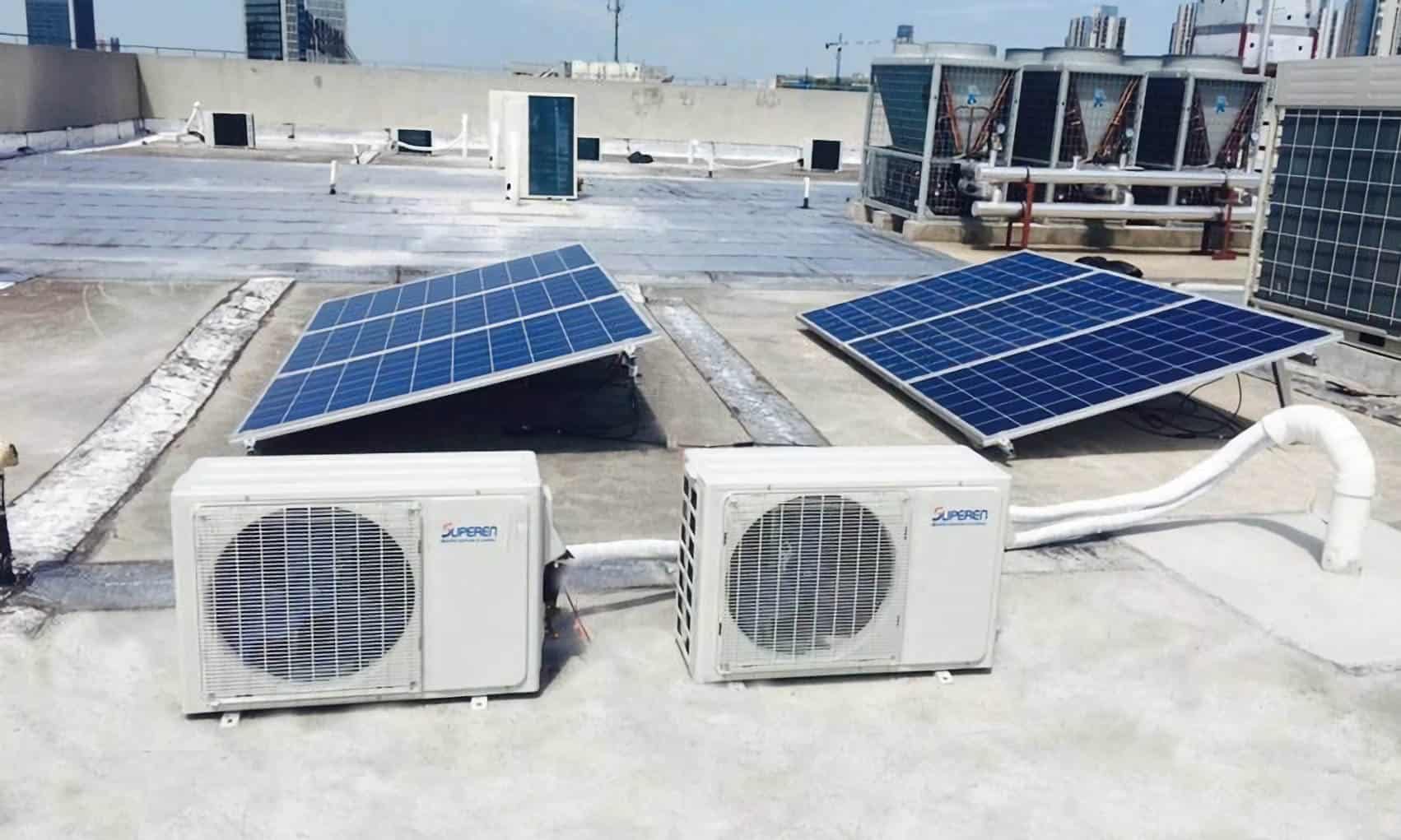Welcome to sainsider.co.za, a comprehensive platform for anything South Africa. In this article, we will be talking about solar air conditioner price in south africa. Kindly stay with us.
Overview
Any air conditioning (cooling) system that utilises solar power is referred to as solar air conditioning.
Passive solar design, solar thermal energy conversion, and photovoltaic conversion can all be used to accomplish this (sunlight to electricity).
The United States Energy Independence and Security Act of 2007 authorized financing for a new solar air conditioning research and development program from 2008 to 2012, with the goal of developing and demonstrating several new technological improvements and mass manufacturing economies of scale.
A solution of ammonia and water was the most commonly used fluid for absorption cooling in the late nineteenth century. The combination of lithium bromide and water is also widely used today.
One end of the system of expansion/condensation pipes is heated, while the other is cooled to the point where ice can form. In the late nineteenth century, natural gas was used as a heat source.
Nowadays, propane is employed in RV absorption chiller refrigerators. Solar thermal energy collectors for hot water can also be employed as a modern “free energy” heat source.
In 1976, a paper sponsored by the National Aeronautics and Space Administration (NASA) examined solar energy system applications of air conditioning.
Solar powered (absorption cycle and heat engine / Rankine cycle) and solar related (heat pump) techniques were discussed, as well as a wide library of relevant literature.
Types Of Sola AC
Photovoltaic (PV) solar cooling
Photovoltaics can power any sort of electrically driven cooling, whether conventional compressor-based or adsorption/absorption-based, though compressors are the most typical implementation.
PV-powered cooling has been the most widely used solar cooling method for modest home and small business cooling (less than 5 MWh/a).
The reasons for this are debatable, but commonly proposed reasons include incentive structuring, a lack of residential-sized equipment for other solar-cooling technologies, the introduction of more efficient electrical coolers, or ease of installation when compared to other solar-cooling technologies (like radiant cooling).
Geothermal Cooling
Earth sheltering or earth cooling tubes can use the earth’s ambient temperature to decrease or eliminate the need for traditional air conditioning. They can considerably lessen the development of unwanted summer heat in many climates where the bulk of humans reside, as well as help remove heat from the interior of the building. They raise construction costs while lowering or eliminating the cost of traditional air conditioning equipment.
Solar open-loop air conditioning using desiccants
To provide an efficient mechanical or evaporative cooling cycle, air can be conducted over common solid desiccants (such as silica gel or zeolite) or liquid desiccants (such as lithium bromide/chloride). The desiccant is then renewed by dehumidifying it with solar thermal energy in a cost-effective, low-energy-consumption, continually repeating cycle. [6] A photovoltaic system can power a low-energy air circulation fan as well as a motor that gently rotates a huge desiccant-filled disk.
Passive Solar Cooling
Solar thermal energy is not used directly to create a cold environment or to drive any direct cooling processes in this sort of cooling. Instead, solar building design seeks to limit the rate of heat transfer into a building during the summer and improve heat removal. It necessitates a thorough grasp of heat transmission techniques such as heat conduction, convective heat transfer, and thermal radiation, the latter predominantly from the sun.
Solar closed-loop absorption cooling
The following are some of the most common solar thermal closed-loop air conditioning technologies.
Absorption: NH 3/H2O or Ammonia/Water
Absorption: Water/Lithium Bromide
Absorption: Water/Lithium Chloride
Adsorption: Water/Silica Gel or Water/Zeolite
Adsorption: Methanol/Activated Carbon
Solar thermal collectors are used in active sun cooling to give solar energy to thermally driven chillers (usually adsorption or absorption chillers). Solar energy heats a fluid, which is then recirculated back to the collectors after providing heat to the generator of an absorption chiller. The heat generated by the generator powers a cooling cycle that generates cooled water. The chilled water generated is used to cool large commercial and industrial buildings.
Solar Air Conditioner Price In South Africa
| Deye 18000 BTU Solar Air Conditioner (DGWA1-ACDCBLW-18K) | R17,077.18 |
| Deye 12000 BTU Solar Air Conditioner (DGWA2-ACDCBLW-12K) | R13,971.20 |
| Deye 24000 BTU Solar Air Conditioner (DGWA1-ACDCBLW-24K) | R21,595.20 |
Thank you for reading our todays topic on solar air conditioner price in south africa. we hope to see you again.
